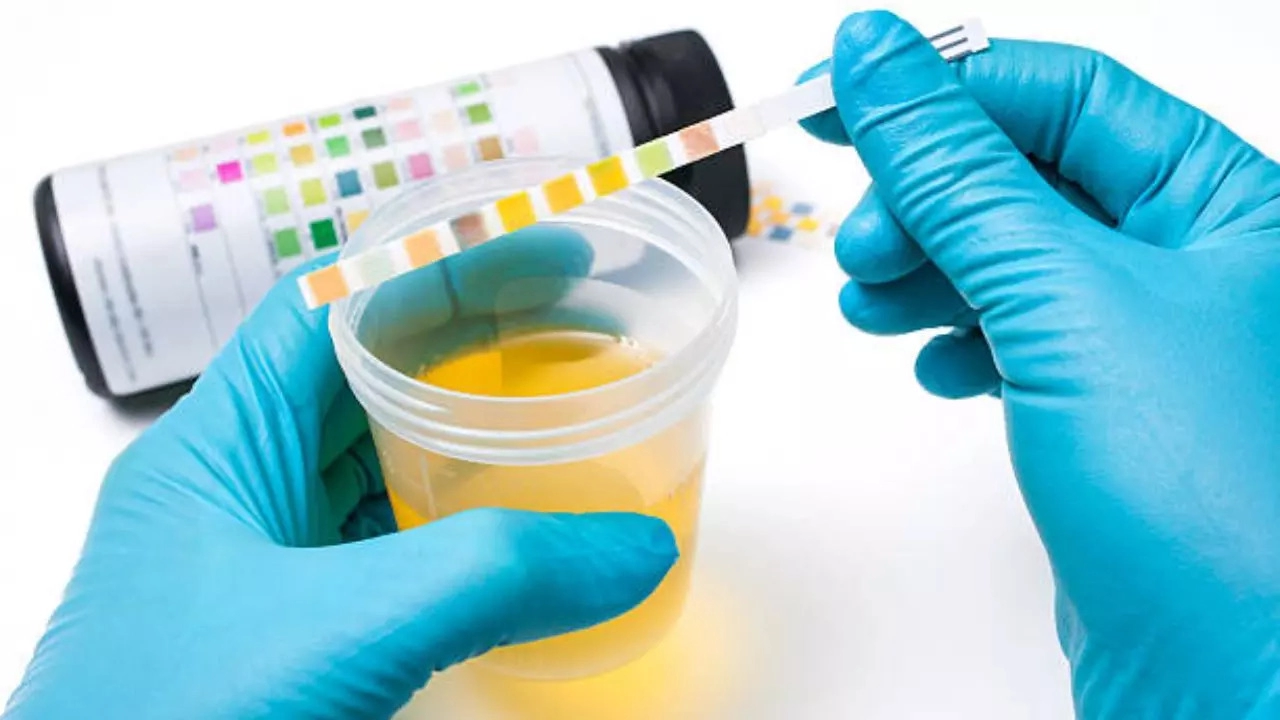Pallavi Mehra • 30 Sep 2024
What Does Your Urine Colour Reveal About Your Kidney Health?

What Does Your Urine Colour Say About Your Kidney Health? Know Here (Image Credits: iStock)
Urine may seem like a mundane bodily function, but it can detect a lot about your overall health, particularly the state of your kidneys. The kidneys filter waste and excess fluids from the blood, producing urine as part of this process. As such, changes in urine colour can be an early indicator of hydration levels, kidney function, or even more severe health concerns like liver disease or urinary tract infections.
Hence, it is essential to understand the various colours of urine and what they signify. We have listed what your urine colour might reveal about your kidney health.
1. Clear or Pale Yellow: Signs of Good Hydration
Urine that is clear or pale yellow is typically a sign of good hydration. When your body is well-hydrated, your kidneys efficiently filter waste, producing dilute urine. According to the National Institutes of Health (NIH), the ideal urine colour is light yellow, which reflects a healthy balance of water intake and waste removal.However, if your urine is consistently clear, it may indicate overhydration. While staying hydrated is essential, drinking excessive amounts of water can dilute essential electrolytes, potentially leading to hyponatremia—an imbalance of sodium in the blood. In extreme cases, this can cause symptoms like nausea, headaches, and confusion, making it vital to monitor fluid intake.
2. Dark Yellow or Amber: Mild Dehydration
Dark yellow or amber-coloured urine typically indicates mild to moderate dehydration. As the body becomes dehydrated, the kidneys conserve water by concentrating urine, leading to a darker colour. The Mayo Clinic advises that dark yellow urine can be a sign to drink more fluids, as prolonged dehydration can strain the kidneys, impairing their function over time.A study published in the Journal of Renal Nutrition found that chronic dehydration might contribute to the development of kidney stones and urinary tract infections (UTIs), both of which can compromise kidney health. Consistent hydration helps prevent these conditions by diluting minerals in the urine, lowering the risk of stone formation and infection.
3. Orange: Possible Liver Issues or Severe Dehydration
Orange-coloured urine may suggest more than just dehydration—it can sometimes be a sign of liver problems. The American Liver Foundation explains that excess levels of bilirubin, a pigment produced by the liver, can cause urine to turn orange. This may be an early sign of liver conditions such as hepatitis or cirrhosis, where the liver’s ability to process bilirubin is impaired.If you experience orange urine alongside other symptoms like yellowing of the skin (jaundice) or abdominal pain, it’s essential to seek medical advice promptly. Severe dehydration can also lead to orange urine, but drinking water typically resolves this issue. Persistent orange urine, however, warrants a visit to a healthcare provider for further investigation.
4. Pink or Red: Potential Blood in Urine
The appearance of pink or red urine can be alarming and is often a sign of blood in the urine, a condition known as hematuria. According to the National Kidney Foundation, hematuria may be a symptom of various conditions, ranging from kidney stones to urinary tract infections, or even more severe issues like kidney disease or bladder cancer.Though some foods, like beets or blackberries, can temporarily turn urine pink or red, the colour should return to normal within 24 hours. If the pink or red hue persists, it’s critical to consult a healthcare provider to rule out serious conditions. Early detection of kidney-related diseases through urine colour changes can significantly improve treatment outcomes.
5. Brown: A Sign of Kidney or Liver Disease
Brown urine can indicate severe dehydration, but it may also point to more severe health concerns such as kidney or liver disease. Brown urine can occur due to the breakdown of muscle tissue, a condition known as rhabdomyolysis, which can overwhelm the kidneys and lead to acute kidney failure.According to research published in the American Journal of Kidney Diseases, rhabdomyolysis can be caused by severe muscle injury, excessive exercise, or even certain medications. The brown colour may also result from liver dysfunction, where excess bilirubin enters the bloodstream and is excreted in the urine. If you notice brown urine, particularly if accompanied by fatigue or muscle pain, seek medical attention immediately.
6. Foamy or Bubbly: A Possible Indicator of Kidney Damage
Foamy or bubbly urine can be a sign of excessive protein in the urine, a condition known as proteinuria. Proteinuria often indicates damage to the kidneys’ filtering units, known as glomeruli, which are responsible for keeping large molecules like proteins out of the urine. A study published in the Clinical Journal of the American Society of Nephrology highlights that persistent proteinuria is often a precursor to chronic kidney disease (CKD).In the early stages, CKD may not present noticeable symptoms, making proteinuria an important warning sign. The presence of protein in the urine can also be a symptom of other conditions like diabetes or high blood pressure, both of which are major risk factors for kidney disease.
Get Latest News Live on Times Now along with Breaking News and Top Headlines from Health and around the world.